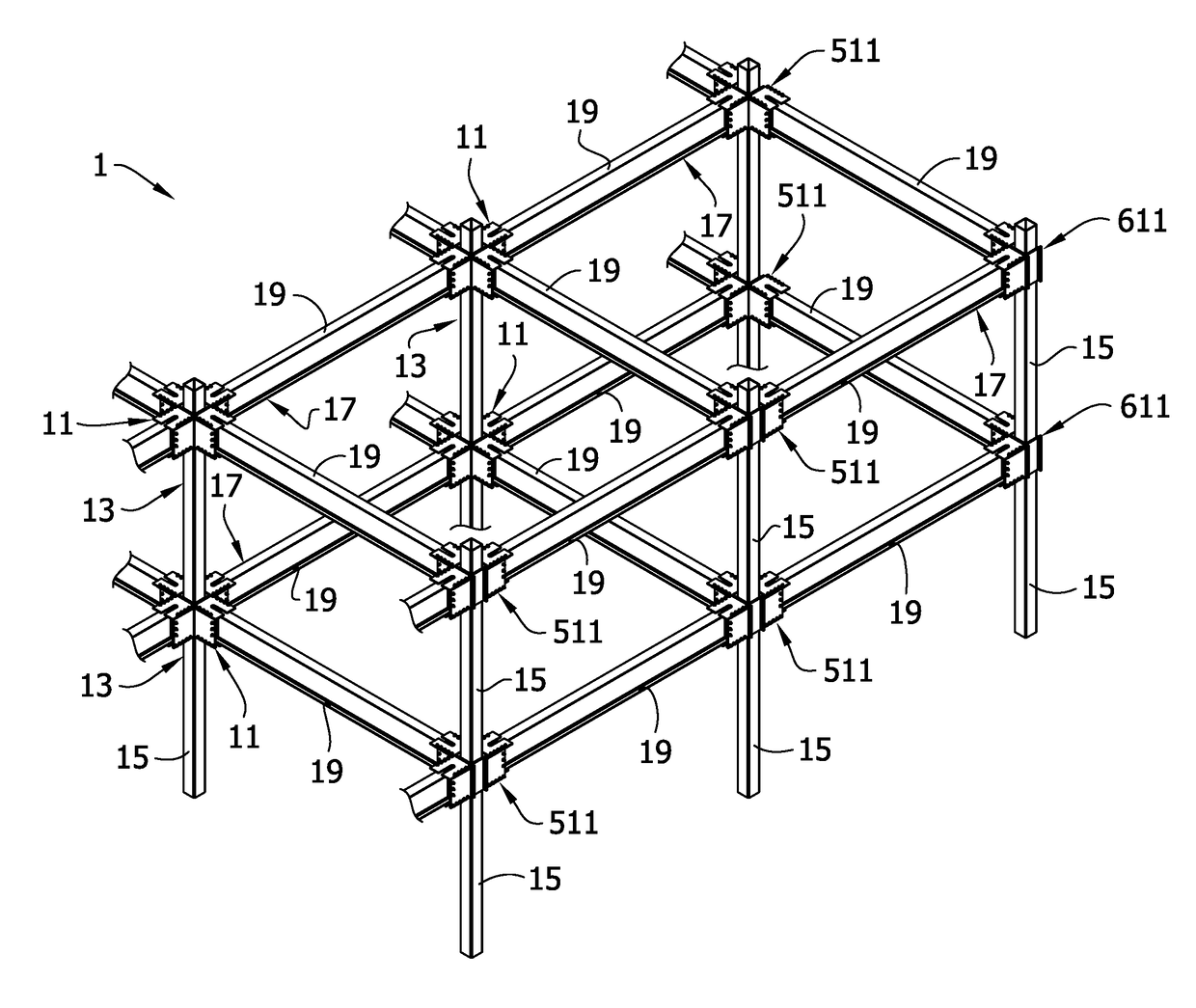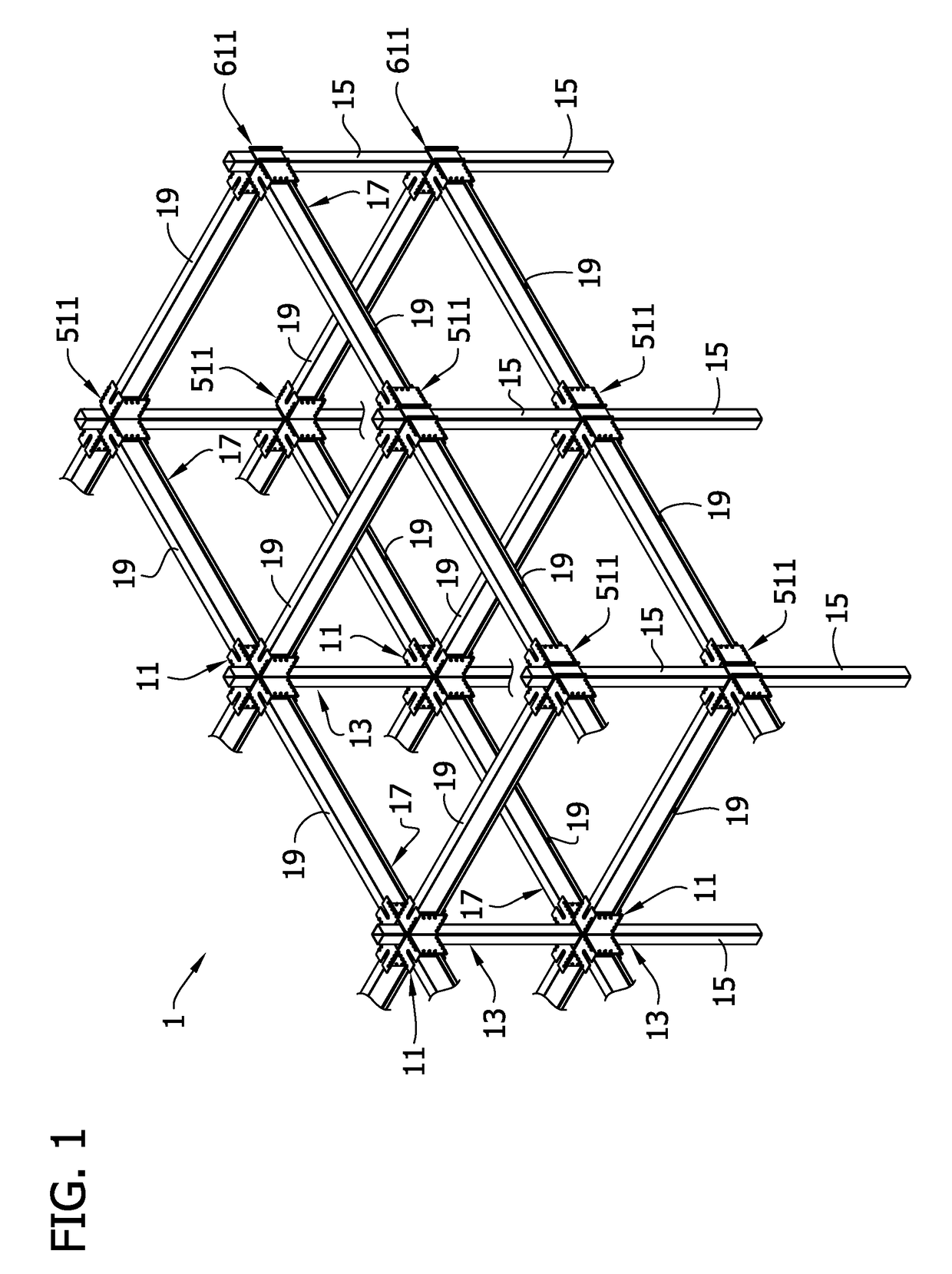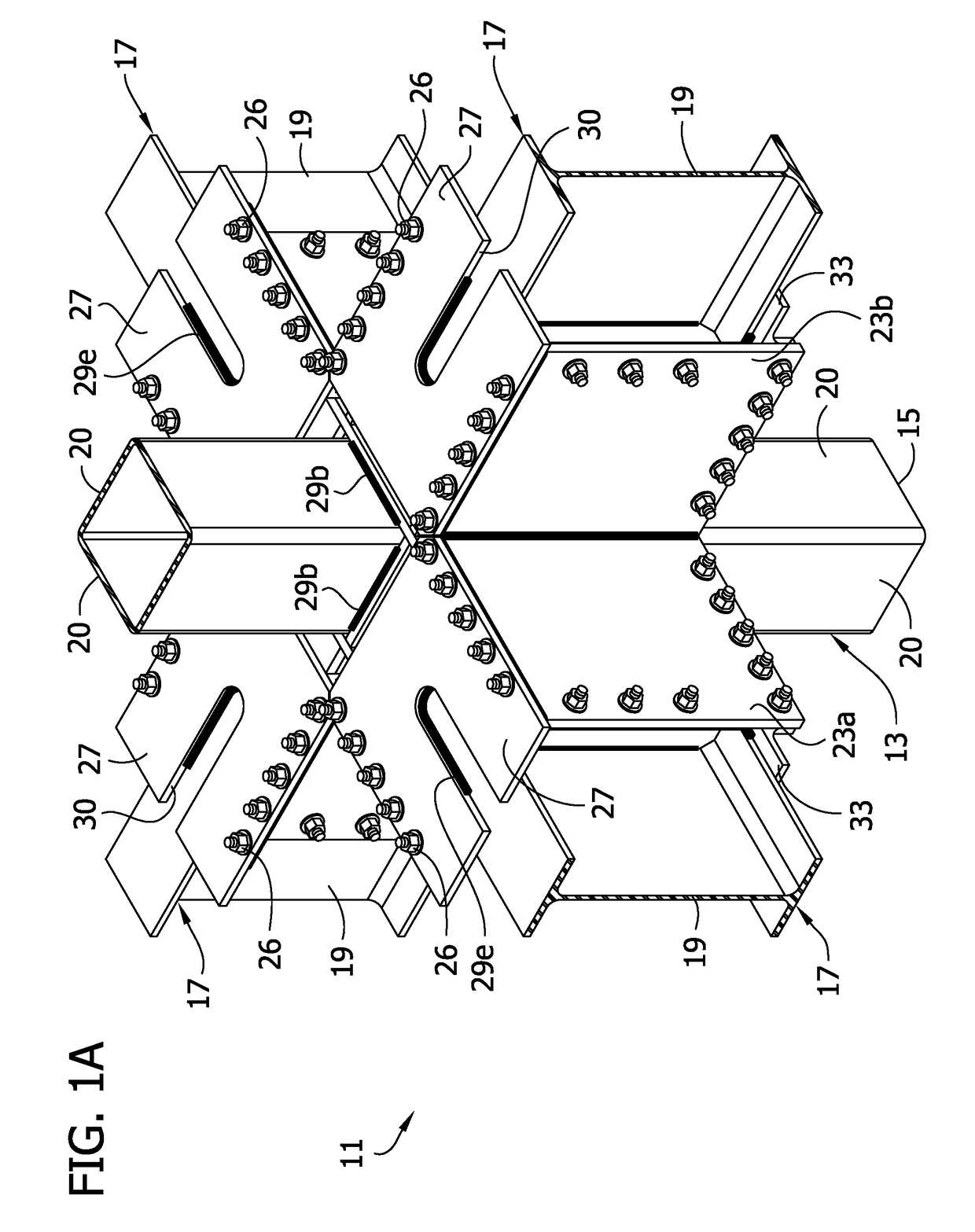Moment resisting bi-axial beam-to-column joint connection
a moment-resisting connection and beam-to-column technology, applied in the direction of manufacturing tools, metal working equipment, welding/soldering/cutting articles, etc., can solve the problems of large vertical plane rotational demands of beam-to-column moment-resisting connections in steel frame buildings, rely on technically uncertain and costly means to transfer significant moment forces, and the method is self-limiting
- Summary
- Abstract
- Description
- Claims
- Application Information
AI Technical Summary
Benefits of technology
Problems solved by technology
Method used
Image
Examples
Embodiment Construction
[0084]Referring to FIGS. 1-15, a bi-axial beam-to-column moment-resisting joint connection structure including a column assembly of a first embodiment is generally indicated at 11. The joint connection structure may be used in the construction of a building framework 1 (see, FIG. 1). In the illustrated embodiment, the joint connection structure joins a column assembly 13 including a column 15 to a plurality of full-length beam assemblies 17 each including a full-length beam 19. A full-length beam is a beam that has a length sufficient to extend substantially the full-length between adjacent columns in a structure (see, FIG. 2). Thus, a stub and link beam assembly as shown in FIGS. 5 and 16 of U.S. Pat. No. 6,138,427, herein incorporated by reference, is not a full-length beam. It will be understood that the beams 19 in FIG. 1A have been broken away, but are full-length beams. In the illustrated embodiment, the joint connection structure has a 4-sided / 4-beam configuration whereby fou...
PUM
| Property | Measurement | Unit |
|---|---|---|
| weight | aaaaa | aaaaa |
| energy | aaaaa | aaaaa |
| strength | aaaaa | aaaaa |
Abstract
Description
Claims
Application Information
 Login to View More
Login to View More - R&D
- Intellectual Property
- Life Sciences
- Materials
- Tech Scout
- Unparalleled Data Quality
- Higher Quality Content
- 60% Fewer Hallucinations
Browse by: Latest US Patents, China's latest patents, Technical Efficacy Thesaurus, Application Domain, Technology Topic, Popular Technical Reports.
© 2025 PatSnap. All rights reserved.Legal|Privacy policy|Modern Slavery Act Transparency Statement|Sitemap|About US| Contact US: help@patsnap.com



